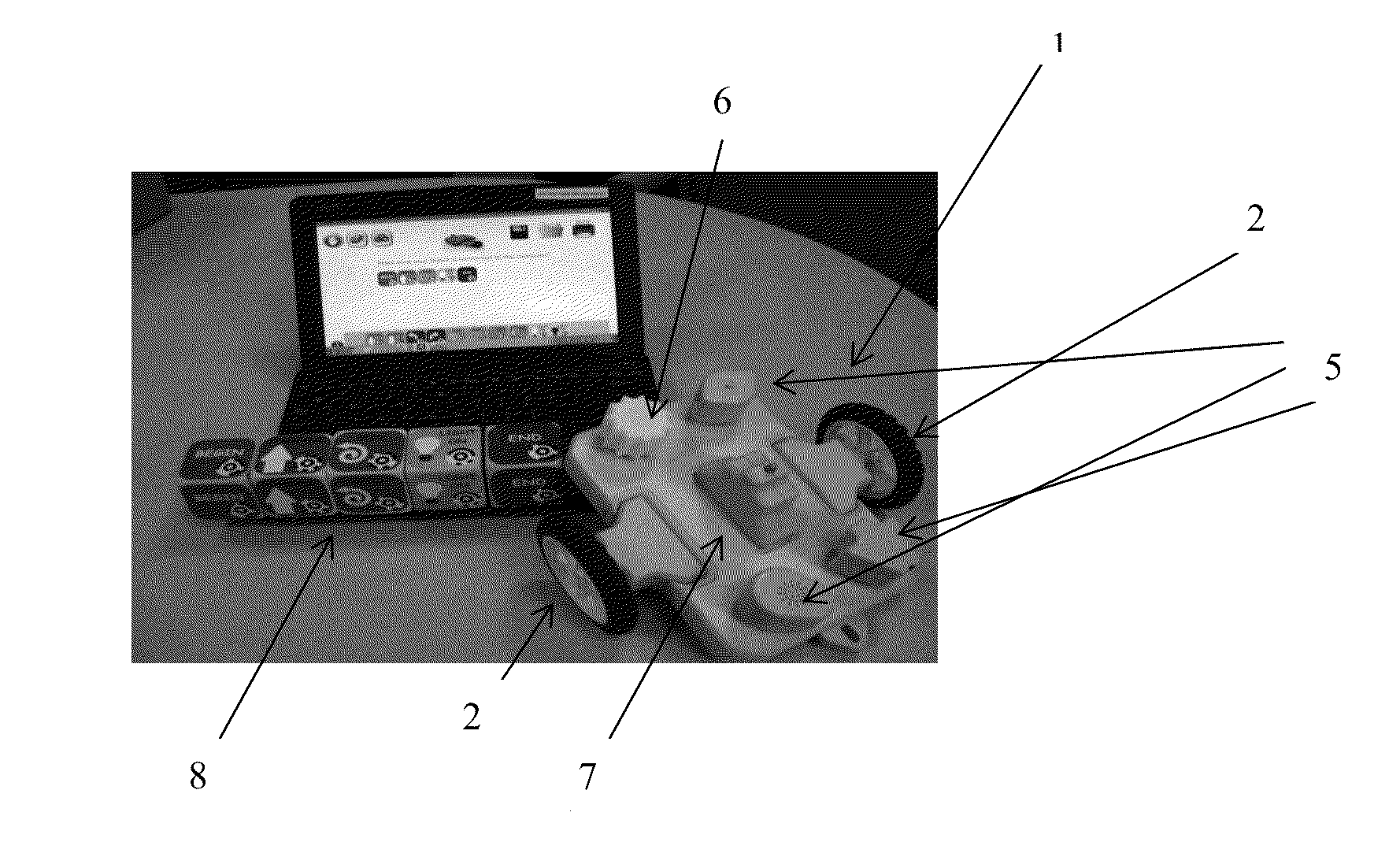Educational robotic systems and methods
a robotic system and robotic technology, applied in the field of education robotic systems and methods, can solve the problems of lack of knowledge and understanding, little focus on the foundational schooling years, and inability to scale up the investment in professional development, and achieve the effect of convenient us
- Summary
- Abstract
- Description
- Claims
- Application Information
AI Technical Summary
Benefits of technology
Problems solved by technology
Method used
Image
Examples
example 1
CHERP-KIWI
[0073]KIWI (Kids Invent with Imagination) Construction Set
[0074]The KIWI construction set enables young children (5-7) to engage in robotics activities in a developmentally appropriate way. The KIWI set contains different elements including two motors, a sound sensor, a distance sensor, a light sensor, a light output, and a proper USB cable. The robot can connect to the computer using the USB cable to receive the program that controls its act. The programming language that is used to program the KIWI robot is called CHERP. FIG. 2 shows a description of the KIWI pieces that can attach to the robot's main body and perform different tasks.
[0075]The pieces can be explained by comparing them to body part. There are three different spots for the motors to attach to the robot body. Two are on the side of the robot, one on the top. Two motors are included in each construction kit. The robot can be mobile or stationary. If the motors get attached to the sides and become wheels, the...
example 2
Application of KWI to Early Childhood Education
Study Design
[0153]The study used a combination of qualitative and quantitative data collection measures. Participating teachers completed a series of pre and post questionnaires in order to measure changes in their knowledge, attitudes, and sense of self-efficacy after participating in the three-day professional development institute. Additionally, teachers' interviews were used to collect qualitative data during and after the institute.
[0154]All surveys were conducted online and implemented before and after the workshop. Those who had not completed all pre-surveys prior to attending the institute were asked to fill them out on the first day of the institute (before any activities had started) using computers provided on site. At the end of the third and final day of the institute, all the teachers were also asked to complete and submit post-surveys on site. A 5-point Likert scale was used for answering the questions in all three survey...
PUM
 Login to View More
Login to View More Abstract
Description
Claims
Application Information
 Login to View More
Login to View More - R&D
- Intellectual Property
- Life Sciences
- Materials
- Tech Scout
- Unparalleled Data Quality
- Higher Quality Content
- 60% Fewer Hallucinations
Browse by: Latest US Patents, China's latest patents, Technical Efficacy Thesaurus, Application Domain, Technology Topic, Popular Technical Reports.
© 2025 PatSnap. All rights reserved.Legal|Privacy policy|Modern Slavery Act Transparency Statement|Sitemap|About US| Contact US: help@patsnap.com



